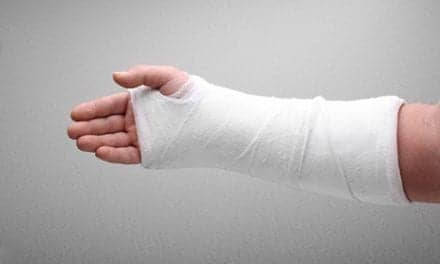According to a recently released benchmarking report, Healthcare Facilities Accreditation Program (HFAP)-certified primary stroke centers met or exceeded benchmarks identified for the majority of performance measures set by the American Heart Association.
Reportedly the first of its kind, the external benchmarking resource identifies target goals and compares results achieved by individual centers.
“We designed the benchmarking report as a tool for both certified and non-certified stroke centers to use for education and training to ensure their programs are meeting specific thresholds,” says Marci Ramahi, director, accreditation and certification operations, per a media release from HFAP.
“Stroke coordinators at certified centers can also share the information in this report within their organizations to demonstrate the quality of their stroke care program or areas for improvement to key stakeholders.”
The HFAP benchmarking report analyzed data from July to December 2017 to determine whether benchmarks identified for each performance measure were achieved. The data represent patients 18 years and older who arrived in the emergency department or who experienced onset of symptoms while in the hospital for another diagnosis.
On average, participating stroke centers surpassed industry standards in key areas including:
- Stroke Team Arrival: Stroke teams responded to 96% of patients’ bedside within 15 minutes of arrival in ED or, for inpatients, of onset of symptoms. Benchmark at 85%.
- Thrombolytic Therapy: Stroke teams initiated IV tPA to 96% of acute ischemic stroke patients within three hours of time last known well. Benchmark at 85%.
- Antithrombotic Therapy: Stroke teams administered the first dose of antithrombotic therapy by the end of hospital day two to 97% of all eligible ischemic stroke patients. Benchmark at 85%.
- Anticoagulation Therapy for AF/Flutter: Stroke teams provided prescriptions for anticoagulants at the time of discharge to 99% of eligible ischemic stroke patients. Benchmark at 85%.
- Stroke Education: Stroke teams equipped 96% of ischemic or hemorrhagic stroke patients or their caregivers with educational materials on stroke care during their stay. Benchmark at 85%.
- Assessed for Rehabilitation: Stroke teams conducted a physical rehabilitation evaluation for 98% of eligible patients. Benchmark at 85%.
“The data used to generate the benchmarking report are key clinical performance metrics primary stroke programs must track and submit quarterly to be certified,” Ramahi says.
“In addition, centers use these measures for internal benchmarking of their care and processes. We compiled this report to help our stroke center partners and other stroke programs develop data-driven quality improvement initiatives and improve clinical outcomes.”
For more information, visit HFAP.
[Source: HFAP]





